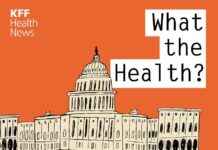The United States has faced its first fatal case of H5N1 bird flu, which has sparked concerns about the potential impact of the virus. The individual, who hailed from Louisiana and was over 65 years old, contracted the virus from infected chickens and wild birds in their backyard flock, as reported by the Louisiana Department of Health on Monday. The specifics of the underlying medical conditions of the deceased and how they might have contributed to their vulnerability to severe infection remain unclear.
Expert Insights on the Situation
The Centers for Disease Control and Prevention (CDC) emphasized that while this fatality is tragic, it does not alter their assessment of the current risk the virus poses to the public. Flu specialists have issued warnings that this unfortunate event may not be an isolated case, and more fatal instances could follow.
Richard Webby, a flu virologist at the World Health Organization’s Collaborating Center for Studies on the Ecology of Influenza in Animals, expressed concerns about the potential for additional fatalities if the H5 virus continues to circulate in birds and dairy cattle. Similarly, Angela Rasmussen, a virologist at the University of Saskatchewan, highlighted that the occurrence of a fatal case was somewhat anticipated given the nature of the virus.
Global Context and Research Findings
While H5N1 has claimed numerous lives worldwide since 2003, this marks the first death from the virus in North America. The United States previously reported 67 human cases of H5N1, mostly with mild symptoms in 2024. Recent research published in the New England Journal of Medicine underscored the dynamics of the H5N1 cases in the U.S. and other countries, shedding light on the virus’s behavior in different populations.
Implications and Ongoing Monitoring
Health experts are closely monitoring the situation, particularly given the mutations detected in the virus samples from the Louisiana case, which suggest a heightened ability to attach to human respiratory cells. The importance of vigilance and caution in interpreting such cases, as highlighted by Michael Osterholm, director of the University of Minnesota’s Center for Infectious Disease Research and Policy, cannot be overstated.
As investigations progress, the focus remains on preventing further transmission and understanding the potential implications of the virus’s evolving characteristics. While the immediate concern is containment, the long-term implications of the H5N1 situation require continuous monitoring and research to ensure public health and safety.

















